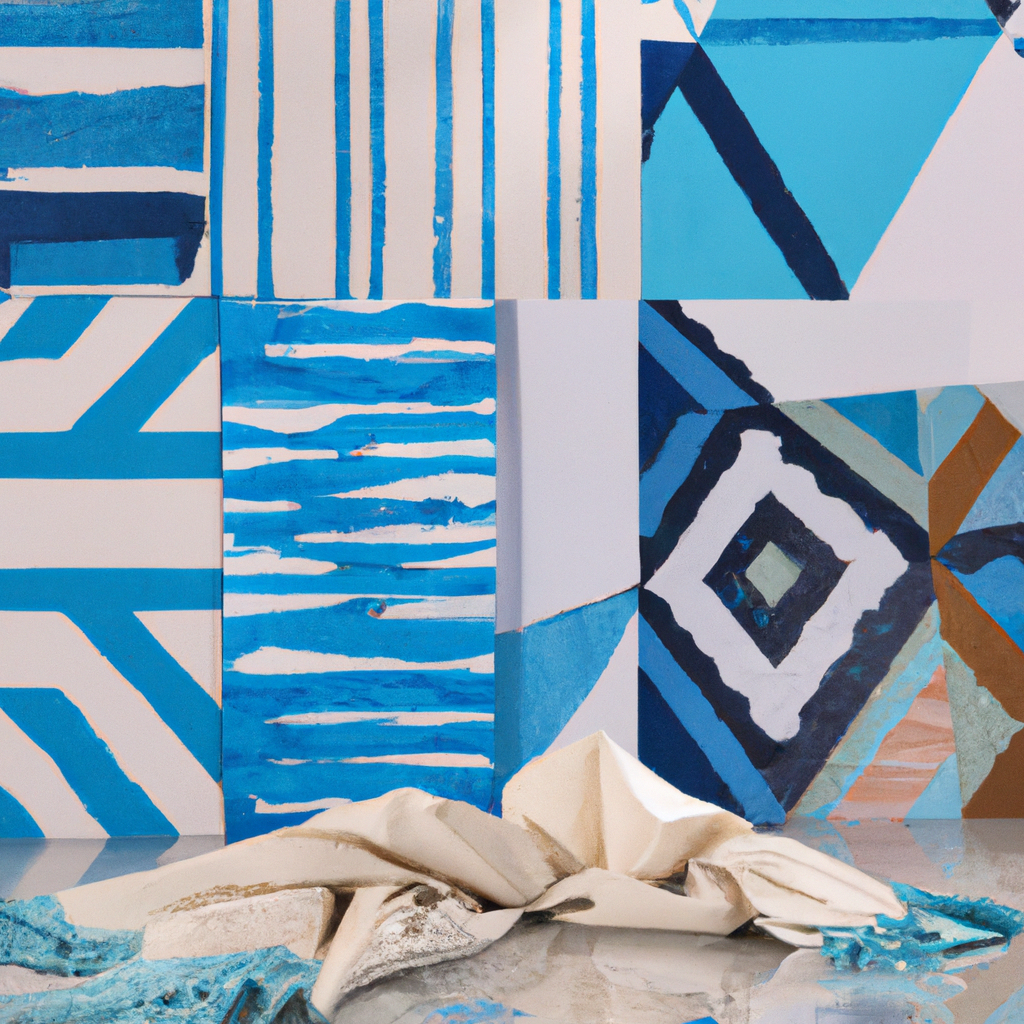
So, you’re curious about the dos and don’ts of mixing patterns, huh? Well, let me tell you, it’s all about finding that perfect balance between boldness and harmony. Mixing patterns can add visual interest and personality to any space, whether it’s your home, office, or even your wardrobe. But it can be a bit tricky if you don’t know where to start. Luckily, in this article, we’ll explore some tips and tricks to help you navigate the world of pattern mixing like a pro. Whether you’re a design enthusiast looking to spruce up your space or simply someone who wants to experiment with their personal style, we’ve got you covered. So, let’s dive right in and uncover the secrets of successful pattern mixing!

Dos of Mixing Patterns
Understand color coordination
When it comes to mixing patterns, understanding color coordination is essential. Colors play a crucial role in creating a harmonious and visually appealing space. Start by choosing a color palette that complements each other and resonates with the overall ambiance you want to achieve. Consider using a color wheel to identify complementary or analogous colors that work well together. This will help guide your pattern choices and ensure they blend seamlessly.
Start with one dominant pattern
A great way to begin mixing patterns is by starting with one dominant pattern. This pattern will set the tone for the overall design and serve as a focal point in the room. Choose a pattern that you love and feel confident in using. Once you have established the dominant pattern, you can then introduce smaller patterns that complement it. This approach maintains balance and prevents the patterns from competing for attention.
Mix different scales
To create visual interest and depth, mix patterns of different scales. Pairing a large-scale pattern with a smaller-scale pattern adds variety and makes the design more dynamic. This contrast in scale adds a layer of intrigue without overwhelming the space. For example, if you have a large-scale patterned wallpaper, pair it with smaller-scale patterned cushions or curtains. The variation in scale will create a visually pleasing composition.
Use a neutral base
When experimenting with mixing patterns, it’s essential to have a neutral base. A neutral base, such as a neutral-colored wall or furniture, provides a foundation that allows the patterns to shine. It acts as a canvas for the patterns to stand out while maintaining cohesion. Opt for neutral tones like white, beige, or gray, which complement almost any pattern or color scheme. This neutral base will anchor the room and prevent it from feeling overwhelming.
Add pattern through accessories
If you’re new to mixing patterns or prefer a more subtle approach, start by adding pattern through accessories. Incorporate patterned throw pillows, rugs, curtains, or artwork to introduce visual interest without overpowering the space. Accessories allow for flexibility as they can be easily swapped or changed, giving you the freedom to experiment with different patterns and combinations.
Layer patterns strategically
Layering patterns is a skillful way to create depth and visual appeal in a room. When layering, consider the scale, color, and texture of the patterns. Pair smaller-scale patterns with larger ones and choose complementary or harmonious color combinations to prevent clashing. Additionally, mix patterns with different textures to add dimension. For instance, pair a smooth geometric pattern with a textured floral pattern to create a striking contrast.
Consider the room’s purpose and style
The purpose and style of a room should influence your pattern mixing choices. Consider the function of the space and the overall design aesthetic you want to achieve. For instance, a vibrant and eclectic pattern mix might work well in a living room or creative space, while a more subdued and coordinated pattern mix could be suitable for a bedroom or study. Aligning the pattern choices to the room’s purpose and style will ensure a cohesive and visually pleasing result.
Experiment with texture
Texture plays a significant role in pattern mixing, adding depth and tactile appeal to a space. Consider incorporating different textures alongside patterns to create a balanced and visually interesting composition. For example, pair a smooth polka dot pattern with a chunky knit throw or a velvet patterned chair. The combination of different textures will add richness to the design and elevate the overall aesthetic.
Create balance with solids
While mixing patterns adds visual interest, it’s crucial to create balance in the room by incorporating solid-colored elements. Solids act as a buffer between patterns, preventing them from overwhelming the space. Use solid-colored furniture, walls, or larger decor pieces to provide areas of rest for the eye. This balance allows patterns to shine without overpowering the overall design.
Consider the size of the space
When mixing patterns, it’s important to consider the size of the space. In smaller rooms, it’s generally best to use patterns in moderation to avoid overwhelming the area. Select one or two statement patterns and incorporate them strategically, while keeping the rest of the elements more minimal. In larger spaces, you have the freedom to experiment with more patterns and scale variations. However, maintaining a balance is still essential to ensure the room feels cohesive and visually pleasing.
Don’ts of Mixing Patterns
Avoid overwhelming the space
While mixing patterns can add visual interest, it’s important to avoid overwhelming the space with too many patterns. The key is to strike a balance between patterned elements and areas of rest. Introduce patterns strategically and ensure they have enough breathing space. This will allow each pattern to shine individually while working together harmoniously.
Don’t mix patterns with conflicting themes
When mixing patterns, it’s crucial to consider the overall theme or style you want to achieve in the space. Mixing patterns with conflicting themes can lead to a disjointed and chaotic look. For example, combining a traditional floral pattern with a geometric modern pattern may clash and create visual confusion. Instead, strive for a cohesive design by selecting patterns that complement each other and align with the overall aesthetic.
Avoid using too many bold patterns
While bold patterns can be exciting, using too many of them can create a visually overwhelming space. Limit the number of bold patterns you incorporate to maintain a sense of balance. Pair bold patterns with more subtle ones to create a focal point without overpowering the room. This will ensure that the patterns work together harmoniously and create a visually pleasing result.
Don’t neglect the importance of proportion
Proportion is crucial when mixing patterns. Avoid using patterns that differ too drastically in scale, as this can disrupt the overall composition. Instead, aim to mix patterns with varying scales while maintaining a sense of proportion. A general guideline is to pair a larger-scale pattern with a smaller-scale pattern to create balance and visual interest.
Avoid mixing patterns without a focal point
When mixing patterns, it’s essential to have a focal point that anchors the design. Without a focal point, the patterns may appear random and disjointed. Select one pattern or element that will serve as the focal point and build the rest of the patterns around it. This creates a cohesive and intentional design that is visually appealing.
Don’t forget about the background
While choosing patterns, it’s crucial not to neglect the background or the surrounding elements. Consider how the patterns will interact with the existing furniture, wall color, or flooring. The background should complement and enhance the patterns rather than competing with them. Keep the background more neutral or subtle to ensure the patterns take center stage.
Avoid clashing colors
When mixing patterns, it’s important to pay attention to color choices and avoid clashing colors. Clashing colors can create visual tension and disrupt the overall harmony of the space. Consider the color wheel and opt for complementary or analogous colors that work well together. This will ensure that the patterns blend seamlessly and create a cohesive look.
Don’t limit yourself to just one design style
Mixing patterns allows for creativity and experimentation, so don’t limit yourself to just one design style. Explore different styles and incorporate patterns that resonate with your personal taste. However, it’s important to maintain a sense of cohesion by considering the overall aesthetic and purpose of the space. Mixing patterns from various design styles can create a unique and visually interesting result.
Avoid overcrowding the room
While it’s tempting to incorporate as many patterns as possible, overcrowding the room can lead to a chaotic and cluttered look. Avoid overcrowding by spacing out the patterns and allowing each one to breathe. This will create a balanced and visually appealing composition without overwhelming the space.
Don’t be afraid to take risks
Mixing patterns is all about creativity and taking risks. Don’t be afraid to step outside your comfort zone and experiment with different combinations. Sometimes the most unexpected pairings can create stunning results. Trust your intuition and have fun with the process. After all, mixing patterns is a personal expression of your unique style and personality.
In conclusion, mixing patterns in interior design can bring life, personality, and visual interest to any space. By following the dos and avoiding the don’ts, you can master the art of pattern mixing and create a harmonious and captivating home. Remember to understand color coordination, start with one dominant pattern, mix different scales, use a neutral base, add pattern through accessories, layer patterns strategically, consider the room’s purpose and style, experiment with texture, create balance with solids, and consider the size of the space. Avoid overwhelming the room, mixing conflicting themes, using too many bold patterns, neglecting proportion, mixing patterns without a focal point, forgetting about the background, clashing colors, limiting yourself to one design style, overcrowding the room, and being afraid to take risks. So go ahead, unleash your creativity, and mix patterns with confidence to create a truly unique and visually stunning interior design.

